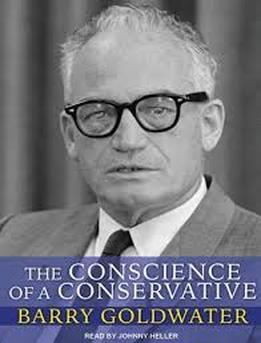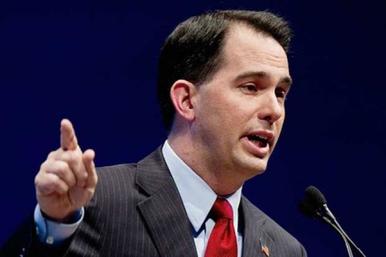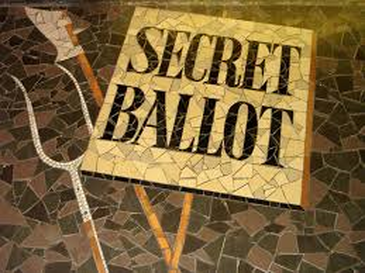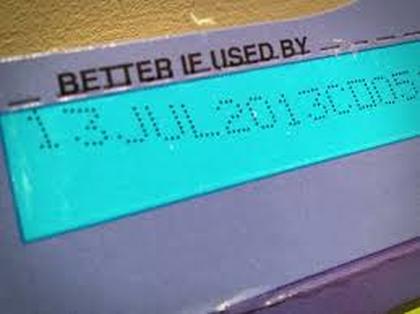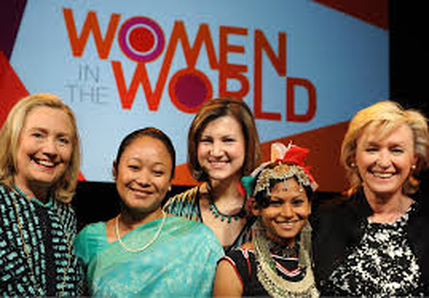I would challenge his reference to President Obama who inherited a nation in 2008 spiraling out of control in the Great Recession and unemployment was over 7 percent and much high in some states. In 2015 it’s below 5 percent. The country was on a course for a Depression, but thanks to President Obama it was avoided. Also, millions of Americans were without health insurance, and the Affordable Care Act is covering more people every year and is a success. Are Americans better off in 2015 than they were in 2008? Yes, and detractors would be hard pressed to deny it.
In response, Mr Miliband said he was the man to tackle powerful interests but was careful to not overstate the nature of government, which can appear to be slow or ineffective at times. "This is important. I am not looking for euphoria. I know that might sound a bit weird... You don't want politicians saying 'vote for me and on day one the world is transformed'. It ain't going to be like that. Change is hard. Change takes time," explained Miliband. Voter apathy One of the conundrums of our time is voter apathy in free world democracies. In countries where people have been denied free elections in the past, they not only take pride in being able to vote but some even risk their lives to vote or walk miles to a polling place. Women especially covet voting once they are given the right. One of the ways to counter voter apathy in the US is by capturing the youth vote, so voting becomes a source of pride and civic duty. Engaging popular culture and its icons to get out the vote in the United States has been in the forefront since 1990 when “Rock the Vote” was developed and reached out to youth to register to vote. Since then millions of young people have been registered to vote as a result. The organizers realized fusing pop culture, technology, and political awareness was a winning combination to attract first time voters, which could motivate them to participate in government as lifelong activists and voters. The UK also struggles with low voter turnout and apathy and is well reported as being a serious problem in British politics. Researchers found that a large segment of the British population do not vote and are not engaged with the political process. Recent research by Survation on behalf of Lodestone Communications took a detailed look at the attitudes of non-voters on a wide range of issues (non-voters are defined as those who did not vote in the 2010 election; this figure includes those who were too young or otherwise ineligible to vote in 2010), reported by Survation. The findings provide valuable insights into the demographic profile of this group, their outlook on life, the issues they care about and their perspectives on power and politics. Moreover, the survey contains much that will be of interest for anyone trying to understand why people don’t vote, how to persuade them to vote, and the implications for future elections. The findings reveal that voters are more optimistic than non-voters. Non-voters aged 18-34, which is the Russell Brand audience, are less optimistic about the future. On the other hand, voters in the same age group believed life would be better in the future. In 2010 non-voters who said they would vote in the next election were, however, pessimistic about the future. Economic worries were a concern for both voters and non-voters. The top three concerns for young people were not having enough money, not being able to pay bills and fears of an uncertain future. This is a good indication of the areas where politicians should be focusing and prioritizing. The researchers found that voters and the population as a whole seem more likely to want politicians to focus on getting Britain out of the EU (13% of all respondents said this was the one thing they wanted politicians to focus more on, but this figure is far lower for younger people taken separately). This issue is less important to non-voters, who showed greater relative concern for the economy, jobs, and tackling poverty. In the US some believe that if one is not going to take the time to learn about the issues, candidates running for office and voting, then they should not complain. Russell Brand has a unique opportunity to be a model for young voters by “re-branding” his rhetoric. All votes count, and this writer applauds Mr. Miliband for confronting the notorious non-voter and bringing attention to responsible citizenship through government activism and voting. Resources http://www.bbc.com/news/election-2015-32515075 http://www.theguardian.com/culture/2015/apr/21/russell-brand-the-general-election-is-irrelevant-in-the-face-of-inequality http://survation.com/apathy-in-the-uk-understanding-the-attitudes-of-non-voters/
6 Comments
This is what American governance might look like if Scott Walker were elected president:
Ease tax burden on the wealthy and corporations—but not for the Middle Class Reduce regulatory practices that protect workers and ensure fairness and safety in the workplace. Make eliminating collective bargaining a national agenda Marriage is only between a man and woman Supports the death penalty Supports charter schools—this is one more way to lure the economically depressed into believing a voucher system benefits them instead of paid public education. Vouchers, like not having to pay union dues, put cash in the hands of Americans, but it also erodes the quality of public education disadvantaging those with lower income and the poor. Instigates voucher systems to eliminate Social Security and Medicare For me, Scott Walker is the king of “bait and switch,” which works for the casual, uninformed voter. And his speech about “making a name for the future” sounds more like a blast from the Barry Goldwater past. And we know how that ended. In Goldwater’s book The Conscience of a Conservative, he builds the groundwork for an unwavering distrust of government. Then on the basis of distrust his arguments take root against graduated or progressive taxation and social welfare. Phrases used back in 1964 suggesting “distrust of government” have now been euphemized with “putting money back into the hands of Americans” and “letting states decide issues, instead of the federal government.” It’s the same conservative drivel repackaged to lure Middle Class voters struggling under the stresses of economic decline since the Great Recession—which they did not cause. Goldwater’s economic propositions, regarded by many as tea party values, are being recycled by Walker the conservative with no conscience. Even though he wants to appear somehow “new” and “revised,” in reality he spouts the same anti-government agenda that has never won a national election. Read part one here Resources http://abcnews.go.com/blogs/politics/2015/02/the-rise-and-rise-of-scott-walker-the-note/ http://thinkprogress.org/election/2015/02/02/3616140/scott-walker-university-students/ http://www.prwatch.org/news/2014/12/12682/walker-right-work http://www.huffingtonpost.com/lee-a-saunders/scott-walker-austerity_b_3326111.html http://www.politifact.com/wisconsin/statements/2011/jun/24/scott-walker/governor-scott-walker-says-critics-are-wrong-he-cu/ http://www.ontheissues.org/Scott_Walker.htm
 Conservatives in the US have been at the forefront of legislating voter identification laws in individual states. Proponents use the argument of preventing voter fraud, which is akin to buying votes, but the reality is less than one percent of US voters have ever been prosecuted for voter fraud. So that leaves preserving the secret ballot to prevent voter intimidation and privacy, but does the secret ballot promote social justice and public responsibility? In modern times casting secret ballots is universally practiced and most voters would not consider any other methods in a general public election. Other voting methods like in the US Congress, the voting takes place orally and in public using a roll call. This is far from the ancient Greeks who used pebbles to cast votes. The ancient Greek polis or city-state was considered inclusive because they allowed poor males born in the polis to vote despite their low socioeconomic status; however, women were not allowed to vote. This kind of direct democracy meant citizens could vote directly on an issue, instead of through a representative. Greek voters deposited a pebble into one of two urns to mark their choice; after voting, the urns were emptied onto counting boards for tabulation. The principle of secret voting was established by at least the 5th century BCE, and Athenians may have used a contraption to obscure the urn into which a voter was placing his hand. Do we need secrecy? In the United Kingdom the use of numbered ballot paper has come under criticism because of the possibility that the number can be linked to the elector or voter. On Election Day, a voter is given ballot paper and the number is noted on a counterfoil of ballot paper putting secrecy in question based on access to the ballot box. Reportedly polling station officials could share voting results of individual electors with non-officials for dubious reasons. If there is an allegation of fraud or false ballots, the process of matching ballots to voters can be done if the “Election Court” deems it necessary. The main criticism is lax security when the authorities match ballot papers to voters without the court’s permission. In the United States the US Constitution does not grant a right to a secret ballot. That right is reserved to individual states. At polling locations as well as absentee mailed in ballots, the ballots are numbered which makes them traceable certifying that the ballot was cast by a registered voter and not fabricated. A single ballot consists of a stub and the actual ballot in which a shared number is printed. The numbered stub is retained as voting proof in case of a recount. Considerations for “open voting” There are pros and cons to secret voting and even proposals for “open voting.” One group of academicians at the University of Amsterdam proposed “open voting” as beneficial. In the paper “Against the Secret Ballot: A new proposal for open voting,” they argued together with others that people should not cast their vote to further their own interests—which is fostered by a secret ballot—but rather form judgments based on the common good. Using the judgment ideal does not present the same issues as the “preference” ideal symbolized by secret voting. The secret ballot encourages personal, self motivated expressions about society. On the other hand, open voting in aggregate encourages public-spirited behavior central to furthering the judgment ideal and the common good. The reason they argue in favor of a public ballot, rather than secret, is to foster the desire for social good, and mutual consent in society that plays a larger role in how we ultimately cast our vote. In a pluralistic society the best way to win social acceptance is to vote in a public-spirited way that benefits the common good of everyone. John Rawls’ political philosophy described in the principles of social justice teaches that society should function to benefit the least advantaged, which supports the concept of open voting encouraging social fairness. The cons for open voting are centered on public shaming and stigmatization. Social stigma could be attached to a person if they identified with a particular group such as a conservative or environmentalist as revealed by their voting practices. Similarly political views might need protection from public knowledge due to personal or professional affiliations. Open voting might also encourage inaccurate caricatures. And some might feel inadequate exposing inability to articulate intelligent, cognitive and rhetorical arguments to justify their political views. The Amsterdam researchers use the “observer effect” as one justification for open voting stating that the probability of being exposed can have an impact on behavior encouraging people to act for the common good, rather than self interests. They proposed a Justification Day where voters are reminded at the polls they might be called on to participate in a justificatory assemble in order to trigger public-spirited ballot responses where they will be accountable for voting choices. It’s fairly certain that despite its flaws, voting by secret ballot is not going to be overturned any time soon. But there have been discussions for years among academics about a better, more socially responsible method for casting one’s vote. Open voting gives us something to think about particularly with the propositions for online voting becoming more popular and questions of privacy enter the conversation. Resources http://blogs.getty.edu/iris/voting-with-the-ancient-greeks/ http://en.wikipedia.org/wiki/Secret_ballot http://www.academia.edu/4411987/Against_the_Secret_Ballot
The majority of the program followed two filmmakers Jen Rustemeyer and Grant Baldwin as they spent six months living on only “rescued” food. They were not allowed to buy any food; instead, they bought or “rescued” culled produce from grocery stores, went through dumpsters, and re-discovered the ancient practice of gleaning fields. A panel discussion at the end of the program, after the two filmmakers discovered the realities of living on rescued food, featured MSNBC’s Tom Colicchio who moderated a panel discussion to examine the price of food, the mysteries of food labeling and what we can do to curb food waste.
At the end of six months, they had collected hundreds of packages of dry goods food and almost never ran out of fresh refrigerated foods. During the experiment they only spent $200 on food purchases, and estimated they rescued approximately $20,000 in good food. They ate well and prepared nutritious meals that appeared to be gourmet quality, as they kept a photographic diary of the food they recovered and the meals they prepared.
Panel discussion The panel discussion at the end of the program lead by Tom Colicchio featured guests: Jonathan Bloom writes about why we waste food, why it matters, and what we can do about it. He is the author of “American Wasteland” which explores how we waste food and the impact it has on society and the environment. He also writes the blog www.wastedfood.com. Emily Broad Leib is a Lecturer on Law and Clinical Instructor, as well as Deputy Director of the Harvard Law School Center for Health Law and Policy Innovation. She co-founded and directs the Center’s Food Law and Policy Clinic, the first law school clinic in the nation devoted to providing legal and policy solutions to nonprofit and government clients in order to address the health, economic, and environmental challenges facing our food system. Michael Curtin joined DC Central Kitchen in 2004. Under his leadership, DC Central Kitchen’s Fresh Start Catering has expanded from traditional catering opportunities to include contracts to provide locally-sourced, scratched-cooked meals to schools in DC. They discussed the legal aspects surrounding the “use or sell by” date labeling of packaged goods. First of all, there are no Federal regulations that require food to be date labeled, except that both month and year need to be printed. If a calendar date is shown, then the words “sell by” or “use before” need to be expressed explaining the date. Infant formula date labeling is ruled by federal regulations and is the only product requiring strict expiration dates. Furthermore, the labeling dates we see on packaging are arbitrarily put there by the manufacturers, and most of the time does not represent a true expiration or determination whether the food product is safe to consume--as the couple who lived on rescued food discovered. One of the problems in agriculture is no mechanism exists for growers to distribute the majority of the produce grown that never reaches retailers because it is not perfect quality. In one stunning example, a celery grower focusing on selling celery hearts, stripped the majority of the outer stalks of celery in the field and cut off the top. In this instance, only one third of celery bunch was actually used and rest sent to a land fill, which presents an additional problem in the environmental food chain. Most of the food waste by growers and consumers ends up in landfills. According to the Agriculture Department, Americans discard more than 25 percent annually of all domestically produced food. A 2009 study showed that a quarter of US water and 4 percent of US oil consumption every year go into producing and distributing food that ultimately ends up in landfills, which ultimately produces methane gas in the atmosphere. Methane is a greenhouse gas 23 times as potent as carbon dioxide in trapping heat within our atmosphere. According to the US Environmental Protection Agency, landfills account for 34 percent of all methane emissions in the US. The unused food or discarded leftovers you threw in the trash add to our collective carbon footprint. Documentaries like “Food Inc.” and “Just Eat It” represent the beginning of a movement toward transparency in the food industry as well as greater consumer awareness of how food is grown, animals raised, and distribution mechanisms contributing to excessive waste. Also, the negative impact on the environment and use of water and oil in the food cycle stimulates efficiency methodologies and conservation practices in the market place and at home. As consumers we can take stock of how we manage our food supplies. Are we using all the food we buy effectively to prevent waste? Composting is back in the conversation, so it’s not just a “hippy communion” hold over from the 60s. Composting as much as you can prevents sending food to landfills and reduces greenhouse gases. Visit the “Just Eat It” website listed below for video clips and where the movie might be showing near you or available online. Resources http://www.msnbc.com/msnbc/watch-just-eat-it-live-the-filmakers http://www.fsis.usda.gov/wps/portal/fsis/topics/food-safety-education/get-answers/food-safety-fact-sheets/food-labeling/food-product-dating/food-product-dating http://www.scientificamerican.com/article/earth-talk-waste-land/ http://www.foodwastemovie.com/ The oil company had been given permission by the US Geological Survey to cut corners and operate the platform with casings below federal and California standards. Investigators would later determine that more steel pipe sheathing inside the drilling hole would have prevented the rupture. Nelson was in the forefront of the environmental movement in the 1970s that resulted in the creation of the Environmental Protection Act in 1970, the Clean Water Act 1972, and the Endangered Species Act of 1973. These were landmark years plotting a course in US history to recognize conservation and preservation of the environment as a priority. 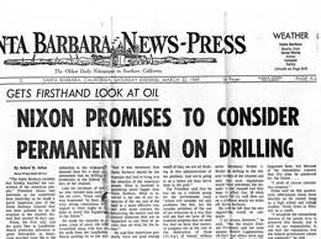 How far have we advanced in the last 45 years, and is the planet cleaner, safer and its longevity ensured? The founders of the landmark legislation had a vision for the future in which environmental impacts and factors would be considered in legislative decision-making processes and guide national policy. National Environmental Protection Act (NEPA) The preamble reads: "To declare national policy which will encourage productive and enjoyable harmony between man and his environment; to promote efforts which will prevent or eliminate damage to the environment and biosphere and stimulate the health and welfare of man; to enrich the understanding of the ecological systems and natural resources important to the Nation; and to establish a Council on Environmental Quality." NEPA contains three sections:
Clean Air Act According to the Environmental Protection Agency, Clean Air Act programs have lowered levels of six common pollutants and particles in the air: cut ground level ozone, lead, carbon monoxide, nitrogen dioxide and sulfur dioxide, and a number other toxic pollutants not itemized. From 1970 to 2012 the aggregate national emissions of the six pollutants have dropped an average of 72 percent. The progress, they say, is because state and local governments have cooperated with the EPA, private sector and environmental groups. The emission reductions have led to improvements in the quality of the air we breathe. Between 1980 and 2012, national concentrations of air pollutants improved 91 percent for lead, 83 percent for carbon monoxide, 78 percent for sulfur dioxide, 55 percent for nitrogen dioxide, and 25 percent for ozone. Where does global warming fit in to the EPA’s adherence to the Clean Air Act? In 2007, the US Supreme Court ruled that global warming emissions are air pollutants and would be subject to EPA regulation under the Clean Air Act if a thorough scientific investigation showed that they endanger the public’s health and welfare. In 2009, the EPA released its scientific findings, concluding that global warming emissions presented a danger to public health (known as the “endangerment finding”). Citing extensive scientific research, the EPA found that global warming pollution is connected with:
The Union of Concerned Scientists warns that the addition of global warming to the emissions limited by the Clean Air Act is under attack. Numerous attempts are being made in the US Congress and fossil fuel industries to stop or limit the powers of the EPA to act on its findings (see Attack on the Clean Air Act).  Calfornia condor brought back from near extinction Calfornia condor brought back from near extinction Endangered Species Act (ESA) The goal of the ESA is to prevent the extinction of imperiled plant and animal life and to recover and maintain populations by removing or lessening threats to their survival. Criteria for Petition are as follows: 1. There is the present or threatened destruction, modification, or curtailment of its habitat or range. 2. An over utilization for commercial, recreational, scientific, or educational purposes. 3. The species is declining due to disease or predation. 4. There is an inadequacy of existing regulatory mechanisms. 5. There are other natural or manmade factors affecting its continued existence. Critics of the ESA contend only 1 percent of species under its protection have recovered, but as of 2012, there are 110 success stories where species were saved. A comparison of the actual recovery rate of the 110 species with the projected recovery rate in their federal recovery plan was positive. The species range over all 50 states, include all major taxonomic groups, and have a diversity of listing lengths. A study group found that the Endangered Species Act has a remarkably successful recovery rate: 90 percent of species are recovering at the rate specified. Without the law, the bald eagle would have disappeared years ago. The California condor would likewise have had a similar fate as the passenger pigeon. The Endangered Species Act has been successful. Few laws can boast a 90 percent success rate. Still, some native wildlife species on almost every continent are at risk for extinction. Preserving all habitats including our own, the air we breathe, and soil we depend on for growing food are inextricably linked to saving wildlife. When habitats are threatened, so are the animals and people that live there. For example, wolverines and polar bears roam across vast distances, so when their habitat is broken up by roads, commercial development, or the disappearance of arctic ice their ability to survive is jeopardized. When water sources are polluted or exhausted and nutrients in the soil become depleted, all humanity is at risk for eventual extinction. These considerations bring the conversation back full circle to the reason Nelson was inspired to create Earth Day in 1970. The oil disaster in Santa Barbara, the Exxon Valdez in Alaska, the Gulf of Mexico in 2010, the California drought to mention a few remind us of the fragility of the planet and its inhabitants including all wildlife and plant life. Indeed, the survival of humanity is entwined with the preservation of the natural world in ways so subtle and gradual that for some its slow demise is easily ignored. The emphasis too often is on immediate gratification, rather than taking the long view on the power of reducing consumerism and active conservation. Recently, when oil prices decreased markedly making gas cheaper than it had been in years, the sales in oversized SUVs soared again. Oil is non-renewable and finite; therefore, the attitudes crafted now toward conservation and sustainability will have a direct impact on the quality of life for our progeny in 100 or 200 years from now when fossil fuel is gone. In the 1970s visionaries created environmental legislation because they knew we were on a path to destroy the planet and ourselves with it. We need to regain that sense of purpose and urgency when reasonably discussing climate change and what we can do as individuals and a nation to save the earth and all its inhabitants. Resources http://www.washingtonpost.com/news/morning-mix/wp/2015/04/22/why-earth-days-creator-might-not-celebrate-earth-day/ http://www.geog.ucsb.edu/~jeff/sb_69oilspill/69oilspill_articles2.html http://www.epa.gov/air/caa/progress.html http://www.ucsusa.org/global_warming/solutions/reduce-emissions/the-clean-air-act.html http://www.defenders.org/habitat-conservation/defending-habitat
|
Dava Castillo
is retired and lives in Clearlake, California. She has three grown
children and one grandson and a Bachelor’s degree in Health Services
Administration from St. Mary’s College in Moraga California. On the
home front Dava enjoys time with her family, reading, gardening, cooking
and sewing. Archives
November 2015
|

